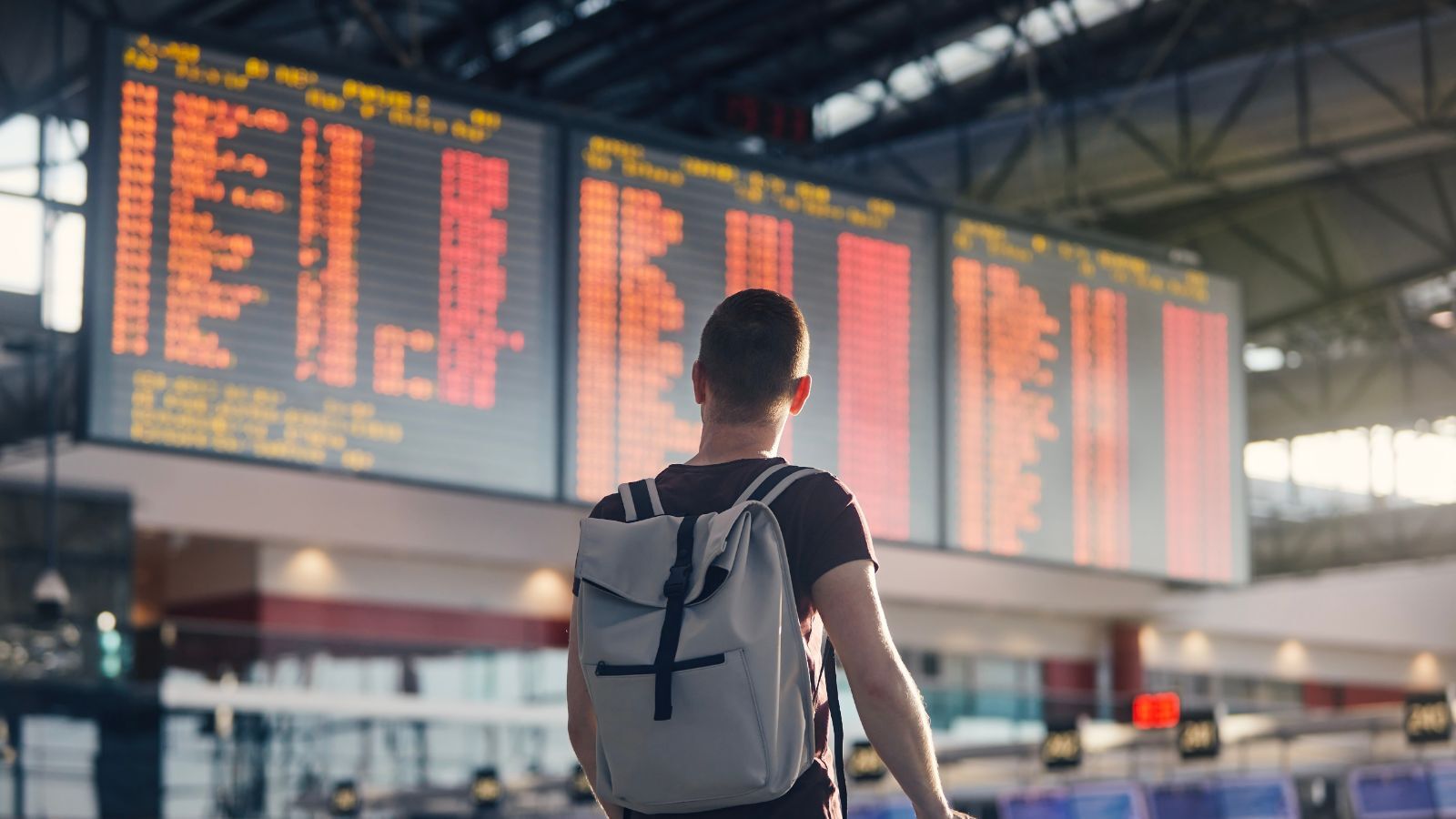In aviation, a flight is considered on-time if it has departed or arrived within 15 minutes of the scheduled time. This is measured using on-time performance (OTP) which provides a standardized means of analyzing how well one service provider operates according to its published schedule compared to another.
OTP data shows the percentage of flights that have arrived (for airlines) or departed (for airports) on-time. The higher the percentage, the better the OTP score.
There are many factors that can cause a flight to be delayed - from bad weather conditions to congestion and industrial action.
A breakdown of flight delay codes
The International Air Transport Association (IATA) created 9 categories of codes, each with a number of subcategories, to identify different causes of flight delays. Find out more about each one below:
1) Passenger and Baggage
Codes beginning with ‘1’ are used for passenger and baggage related delays. This could be anything from late check-ins and booking errors (which can cause oversales) to missing passengers at the boarding gate and baggage processing.
EXAMPLE: Code 11 and Code 12 are both used to categorize late check-ins; 11 is for acceptance after deadline and 12 is for congestion in the check-in area.
2) Cargo and Mail
Codes that start with ‘2’ are used to describe delays caused by cargo and mail handling.
EXAMPLE: Code 26 is used if there has been late preparation in warehouse.
3) Aircraft and Ramp Handling
These codes are used for delays caused by aircraft and ramp handling and can include aircraft cleaning, fuelling/defuelling, and delays with loading or unloading.
EXAMPLE: Code 35 is used for delays getting an aircraft cleaned which may affect the turnaround time and cause a late departure.
4) Technical and Aircraft Equipment
These codes cover a range of technical delays caused by issues such as scheduled/non-scheduled maintenance, special checks, and additional works.
EXAMPLE: Code 46 is used if there needs to be an aircraft change for technical reasons.
5) Aircraft Damage and EDP/Automated Equipment Failure
Codes starting with ‘5’ are used for delays caused by damage to aircraft. This could be either:
- During ground operations (e.g. loading/off-loading damage, collisions)
- During flight operations (turbulence, bird or lightning strike, heavy or overweight landing)
EXAMPLE: Code 51 is used for damage during flight operations, and code 52 is used for damage during ground operations.
6) Flight Operations and Crewing
Codes beginning with ‘6’ describe delays relating to operational and crewing issues such as flight plan changes, cabin crew shortages, or late cabin crew boarding.
EXAMPLE: Code 63 is used for late crew boarding or departure procedures which could be a pilot caught up in traffic jams on the way to a shift.
7) Weather
Codes starting with ‘7’ are for weather related delays, and this may well be the type of delay that passengers experience most frequently. While it may seem like there isn’t much an airline can do to change the weather, they can certainly be prepared.
EXAMPLE: Code 75 is for the de-icing of aircraft – a very common weather-related delay. While some airlines and airports are well prepared for de-icing given that managing in conditions below zero degrees are routine for them, others aren’t as ice is more of an anomaly.
8) Air Traffic Flow Management (ATFM) Restrictions, Airport and Governmental Authorities
Codes beginning with ‘8’ are used for Air Traffic Control (ATC) restrictions and delays caused by airport or governmental authorities. Causes of this type of flight delay could be:
- Restrictions en-route or at airport of destination
- Immigration, customs, health
- Industrial action
- Political unrest
- Noise abatement
- Night curfew
EXAMPLE: Code 84 is used for ATFM due to weather at the flight’s destination.
9) Reactionary and Miscellaneous
Finally, codes starting with ‘9’ are used for reactionary reasons. Some examples include:
- Aircraft rotation
- Crew rotation
- Industrial action with own or another airline
EXAMPLE: Code 93 is used for aircraft rotation, which is the late arrival of aircraft from another flight or previous sector.
Who’s been on time this month? Discover the most punctual airlines and airports in the world and North America.



